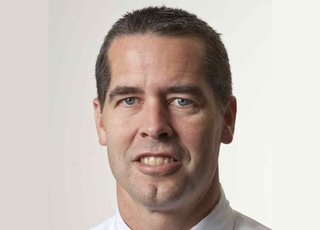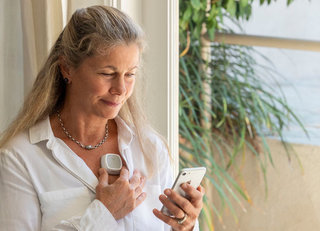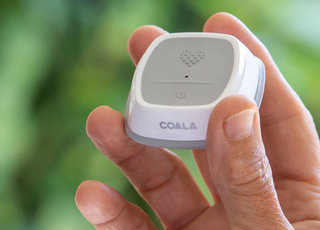Charles Love, MD is the Director of Cardiac Rhythm Device Services and Professor of Medicine at the Johns Hopkins University School of Medicine and Hospital. He is an internationally renowned cardiac electrophysiologist who has implanted and overseen the patient management of more than 9000 pacemakers, as well as removed over 3000 pacemaker and defibrillator lead wires from patients´ hearts. He was the first cardiologist to use a laser to extract a pacemaker wire from a person´s heart.
I chose cardiac electrophysiology (EP) because in my early years of medical training I loved electronics, computer programming, and surgery – so EP was the perfect field for me. My research interests focus on better ways of removing wires safely and completely. This may not seem as “glamorous” as some other areas of cardiology, but is critical for many cardiac patients´ healthcare journey. Another area of interest I have is making sure that new implantable heart devices being developed have the best algorithms to work with an individual patient´s heart rhythm.
The Covid-19 pandemic has brought visibility to an idea the electrophysiology community has been defending and promoting for years: wider and smarter use of remote patient monitoring. Remote monitoring has been a godsend for many patients during the pandemic, and patients (as well as many previously reluctant physicians) have recognized its value. Now even patients that have been resistant remote monitoring for whatever reason are eager for us to enroll them in remote monitoring because they don´t want to come to the clinic and possibly be exposed to the COVID virus.
This new awareness is a step forward that I hope will help spur changes to the management of other heart rhythm disorders. These types of disorders, which include arrhythmias such as atrial fibrillation (AF), supraventricular tachycardias and even ventricular arrhythmias, are not well served by the existing model of in-person care. The “classic model”, whereby patients have to come into the clinic or hospital once every three or every six months for a check-up, provides only a “snapshot” in time. For patients with implanted cardiac devices, a lot of things can go wrong within that period of time. This could include a device battery reaching replacement time, a pacemaker failing to capture all heart beats, a defibrillator emitting inappropriate shocks, and even to a broken lead wire. One concrete example of an opportunity to reduce morbidity involves patients who develop paroxysmal AF. By identifying a patient with AF early, we have the opportunity to begin anti-coagulation thereby markedly reducing the risk of an embolic stroke. By monitoring such patients continuously (rather than semi-annually), we know within 24 hours when a problem occurs. Not having to wait months to make a diagnosis, with all the health risks this implies, has been proven to reduce adverse events as well as mortality for patients. By not having access to remote data, we cannot detect such problems until they come to the clinic for a check-up or directly present with symptoms. By that time they could become highly symptomatic, have a stroke, or worse.
Implantable loop recorders (ILRs) have been revolutionary to our ability to diagnose many heart rhythm problems early. Unfortunately, their algorithms are non-specific and thus we get many “alerts” for artifact, undersensing or benign premature beats. Indeed, we get dozens of reports each day generated by these monitors that are incorrect and non-actionable. For example, an ILR would detect an irregularity due to premature atrial or ventricular beats and diagnose it as AF. That happens often because the underlying algorithms do not look at P-waves but rather only at QRS intervals, which are a crude measure of the underlying heart rhythm. Electrophysiologists know of these shortcomings, however we must spend a lot of time reviewing reports and adjudicating ILR generated diagnoses that are incorrect, wasting time that could be better used in taking care of patients with true heart rhythm issues.
The next generation of implantable cardiac remote monitoring devices and their associated cloud based storage and analysis systems need to be developed with these considerations in mind. We need far more accurate analysis, using advance artificial intelligence, to enable what I call “exception-based visits”: only patients with an actionable need that cannot be managed remotely would come for an in-person office consultation. For pacemakers and implantable defibrillators, all manufacturers produce devices that go through the threshold checks as well as check sensing and lead integrity checks on a daily basis. Virtually all modern devices also look for arrhythmias as well. If these features are present and working properly, there really is no longer a need to have a patient come to the office for a “routine visit.” Though these innovative devices are used widely, the lack of consistent remote monitoring of them with the clinical protocols to manage the findings has delayed our movement from the old follow up “standard of care”, to a new standard that eliminates unnecessary in-person visits. Some of the resistance is financial, with physicians concerned they will lose revenue if patients are not coming to the office. Some is due to patients feeling they are getting better care by coming to the office, when indeed the opposite is true.
There is also a real justified concern that managing all the data generated from smart remote monitoring devices would eat up too much of physicians´ time reviewing countless reports, as has been the case with loop monitors. However, technology has evolved significantly, and the emergence of a new generation of AI-powered analysis of the data that can automatically (and much more accurately) process, analyze, and color-code the data according to their normalcy or severity, and indicate only issues that warrant an intervention.
As healthcare systems transition to more and smarter remote patient monitoring, cardiology practices will need people who are qualified to interpret the data. There are a lot of people working in this niche currently who don´t have the necessary qualifications and yet are acting as intermediaries. It´s a little bit like the Wild West when it comes to who is hired to work at many of these companies. The International Board of Heart Rhythms Examiners, an organization that I represent, has developed and will deliver next year a remote monitoring credential (Cardiac Device Remote Monitoring Specialist –CDRMS) so that we can introduce more rigor and competency into the system.
Ultimately, remote patient monitoring alert systems have to be enhanced, both with more nuanced detection algorithms and with better qualified technologists. They need to be more accurate so that events that are not significant are suppressed, and those that are serious are brought to the attention of the clinician.







